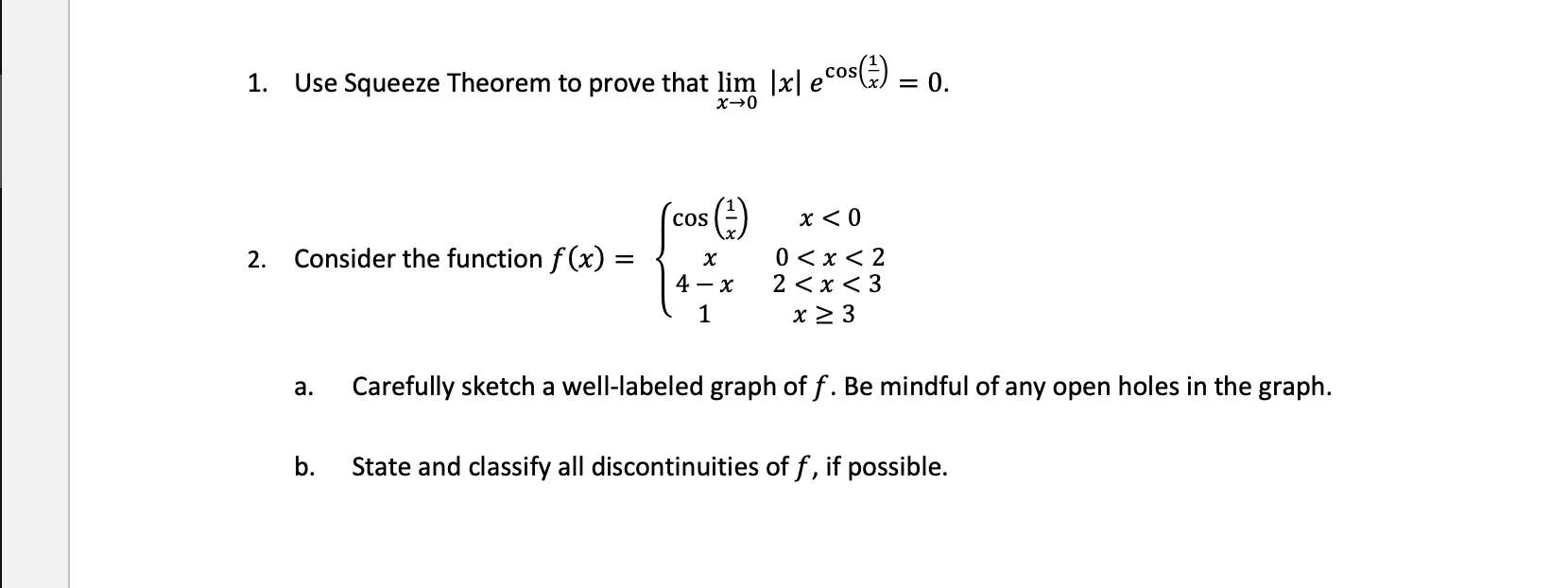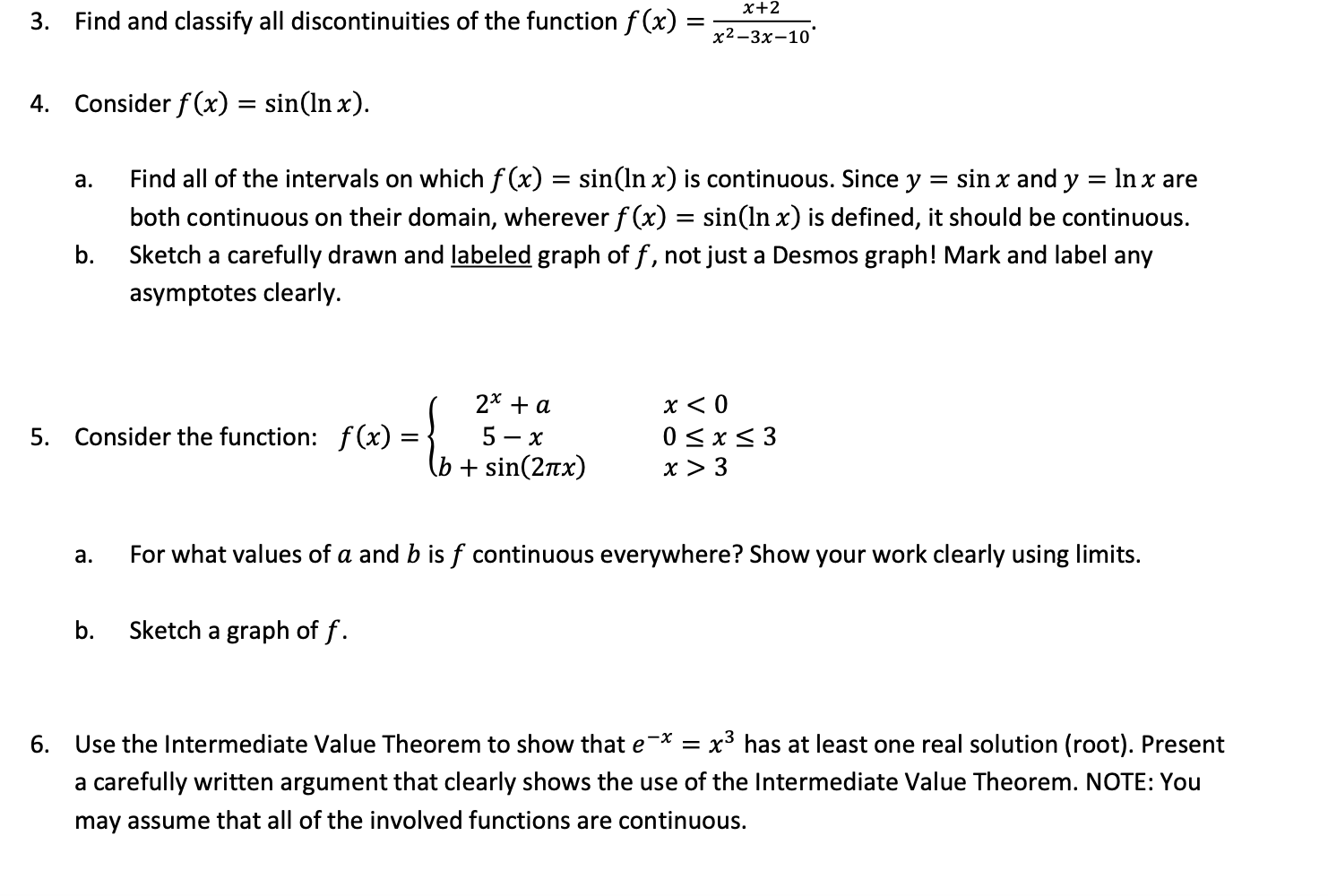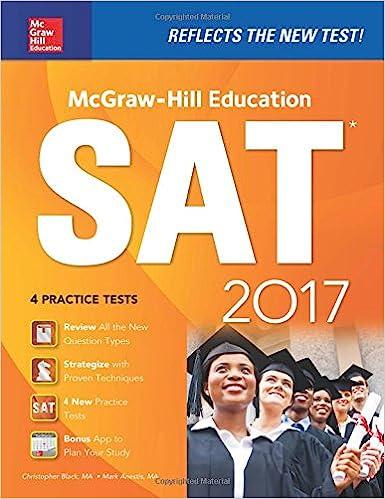Answered step by step
Verified Expert Solution
Question
1 Approved Answer
1. Use Squeeze Theorem to prove that lim [x] ecos(); = 0. x-0 2. Consider the function f(x) = = a. b. COS ()


1. Use Squeeze Theorem to prove that lim [x] ecos(); = 0. x-0 2. Consider the function f(x) = = a. b. COS () X 4-x 1 x < 0 0 3. Find and classify all discontinuities of the function f (x) 4. Consider f(x) = sin(lnx). a. b. a. = sin x and y = ln x are Find all of the intervals on which f(x) = sin(ln x) is continuous. Since y both continuous on their domain, wherever f(x) = sin(ln x) is defined, it should be continuous. Sketch a carefully drawn and labeled graph of f, not just a Desmos graph! Mark and label any asymptotes clearly. 5. Consider the function: f(x) 2x + a 5-x (b + sin(2x) (0) = { b. Sketch a graph of f. x+2 x-3x-10 x < 0 0x3 x > 3 For what values of a and b is f continuous everywhere? Show your work clearly using limits. 6. Use the Intermediate Value Theorem to show that e -x = x has at least one real solution (root). Present a carefully written argument that clearly shows the use of the Intermediate Value Theorem. NOTE: You may assume that all of the involved functions are continuous.
Step by Step Solution
There are 3 Steps involved in it
Step: 1

Get Instant Access to Expert-Tailored Solutions
See step-by-step solutions with expert insights and AI powered tools for academic success
Step: 2

Step: 3

Ace Your Homework with AI
Get the answers you need in no time with our AI-driven, step-by-step assistance
Get Started


